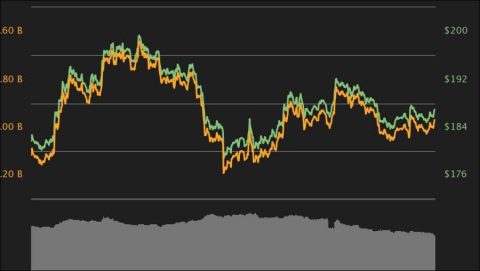A sideways market is when prices of investments remain within a tight range for any period. They don’t make higher highs or a breakout above the previous highest price. If they did, that would indicate a bull market. They don’t make lower lows or drop below the previous level of support. If they did, that suggests a correction. If they fell 20%, that would be a bear market.
A sideways trend often refers to the stock market. That includes the Dow Jones Industrial Average, the S&P 500, or the NASDAQ. But it can occur in any investment, including bonds, commodities, or foreign exchange.
Key Takeaways
What a Sideways Market Tells You
A sideways market means prices are getting ready to continue forward in the same direction they had been in before. It’s unlikely that a sideways market will occur before a significant change in direction
It’s also known as consolidation. It’s a normal part of trading action. Traders are uncertain as to which direction the market could make next. They are building on past gains by being cautious. They wait for the market to reverse its course. The longer they hold on, and there is no definite change, the more confident they become. Consolidation often occurs as the market gets ready to make higher highs or lower lows.
There is a critical exception. That’s if it occurs during a transition of the business cycle. A sideways market then signals the next phase of the business cycle.
For example, if there has been a period of irrational exuberance, that signals the peak of the business cycle. A sideways market could occur before a downturn. Similarly, a recession marks the bottom of the business cycle. A sideways market at that time might signal a new bull market. You must pay attention to the leading economic indicators. They tell you what phase of the business cycle we are currently experiencing.
How to Identify a Sideways Market
To identify a sideways market, you must first find out the levels of support and resistance. Support is the price where buyers come back in. They don’t let the price fall below that level. Resistance is where buyers sell the investment. They don’t believe it will go much higher.
A sideways market will trade within those two levels of resistance and support. That’s also called a range-bound market. It may occasionally rise above or below those levels, but it doesn’t follow through with an even higher high or lower low.
If prices exceed the level of resistance, then follows that up with an even higher high, the sideways market is ending. It’s transitioning into a bull market. If prices fall below the support level, then fall even lower, that’s also the end of the sideways market. It’s the beginning of a down market.
Strategies
A sideways market is a difficult environment to make money for day traders. It is a welcome sign for those who are more likely to buy and hold. With patience, the market will reveal which direction it will head into next. It’s especially important to watch when the economy has been at any business cycle phase for an extended period.
The best way to make money in a sideways market is to be diversified. That way, you won’t lose too much or gain too much when the market breaks out.
Most studies show that it’s more important to have the right asset allocation than to try and correctly time the market. When the market is drifting sideways, it’s a great time to rebalance your allocation.
Visits: 70



